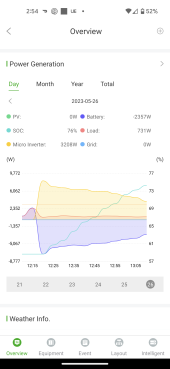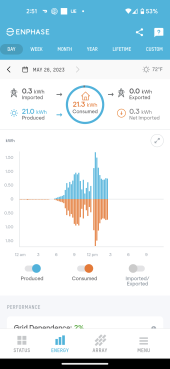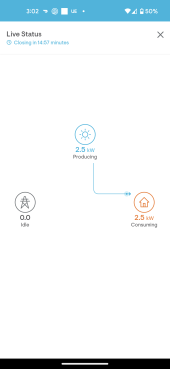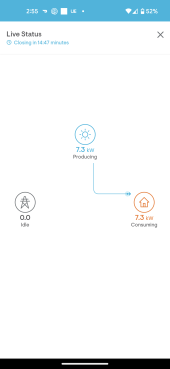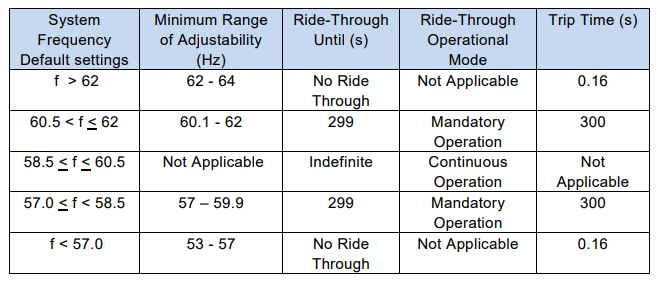I agree, and would like to see this happen as well. I have added 2kW of DC coupled solar and will probably add another kW so I can limp through a power outage without AC coupling. However I still would like to find a solution in case we have an extended outage during cloudy weather and I need the additional generation that my 6.6kW of IQ7s could provide.
Ampster.. just to be clear , with the current "Off-Grid FW60 No Export" grid profile installed, and my 12Kw PV AC coupled only input, I have been charging batteries, and supporting loads for > 24 hours.
My 30kWh battery bank was charged to around 93% when the sun went down last evening, and everything stayed up overnight, and when PV was available I am recharging the battery and supporting all loads, and when a new load shows up the PV supplied jumps up to support same, so this grid profile appears to meet the need for an extended off grid issue.
Current problem is when I look in the installer tool kit, I don't see this grid profile available, and my second concern is if/when the grid goes down if the internet goes down as well, how do I modify the grid profile to the needed one?
I am satisfied that I have a solution for a grid down, with a100% IQ7a enphase system AC coupled to the Sol-ark , and the Sol-ark disables the PV when my battery hits 95% SOC, and then turns the PV back on when it drops below 65% which are my "smart load" settings.
I have also considered adding some DC panels to the Sol-ark, but would like to get as much value as possible out of my current investment.
Do other folks have access to this Off-Grid FW60 No Export grid profile, and I am just not looking in the correct place on the enphase installer www site?
Will continue to update here results, Ideal situation would be to identify a "set and forget" grid profile that will operate with Grid up, or Down and the Sol-ark 15kw, we shall see if that grid profile exists, or if perhaps Sol-ark could convince Enphase to develop one.
I was going to remove the current grid profile and go back to grid export mode, but since I do not see the current grid profile available, I am just going extend my off grid test and build up more information to share and learn, as long as the sunny weather continues, and I have no wife problems with a "oops honey, sorry we have no power cause I was screwing around with the system."

I have attached some Sol-ark Freq vs time, Iq7a PV power vs time, and battery SOC vs time. It does appear that the Sol-ark shifted the freq up to 62hz when the 94% battery SOC was reached, and this caused the PV generated to drop. Not sure I understand why it did not stay off, longer, but at least it appears that the Sol-ark can be "in charge" and my BMS doesn't need to trip
Still learning



